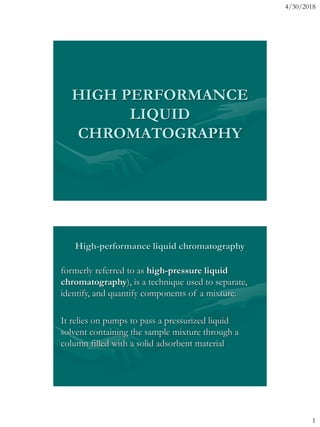This document provides information about high performance liquid chromatography (HPLC). It discusses the principle of HPLC, which is that mixture components travel through the column at different rates depending on their affinity for the stationary phase. The document also describes the types of HPLC based on the mode of chromatography or separation principle used. It provides details on the instrumentation of HPLC including the solvent delivery system, pumps, sample injection system, columns, detectors, and recorders/integrators. It concludes by listing some advantages of HPLC such as its ability to perform fast, efficient, and reproducible separations of complex mixtures.










